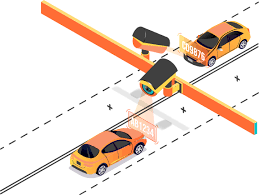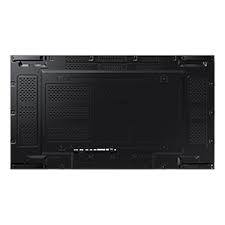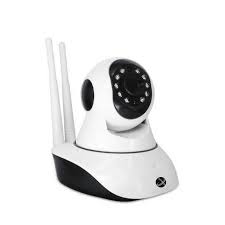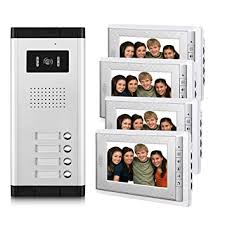Safety and surveillance are two crucial aspects of modern society that have become increasingly important in recent times. With rising crime rates and the ever-present threat of terrorism, it has become imperative for individuals, businesses, and governments to invest in advanced safety and surveillance systems.
One of the most effective ways to ensure safety and security is through the use of closed circuit television (CCTV) and surveillance systems. These systems allow for constant monitoring of public spaces, buildings, and other areas that require heightened security. CCTV cameras can be installed both indoors and outdoors, providing a 24/7 surveillance system that can be monitored remotely.
In addition to CCTV cameras, access control systems are also essential for maintaining a secure environment. These systems allow for restricted access to certain areas based on specific criteria such as biometric authentication or smart card access. Access control systems can also be integrated with time and attendance tracking systems to ensure that only authorized personnel are allowed into certain areas at specific times.
Fire alarm/detection & PA systems are also an important aspect of safety and surveillance. These systems help detect fires early on and alert occupants through loudspeakers or other communication devices. Firefighting equipment such as extinguishers, sprinklers, etc., can also be integrated into these systems for quick response in case of a fire emergency.
Explosive/bomb detectors, X-ray scanners, hand-held metal detectors, door frame metal detectors, door interlocking systems are some other advanced technologies that have been developed to detect potential threats such as explosives or weapons. These technologies have proven to be effective in preventing terrorist attacks or other violent incidents.
In addition to physical security solutions like boom/spike barriers, motorized swing & sliding doors & gates, bollards, blockers & turnstiles; there are also mobile video surveillance solutions available for traffic management and crowd control at public events.
Finally, it is important to note that safety and surveillance technologies are constantly evolving. As new threats emerge, it is essential for individuals, businesses, and governments to stay up-to-date with the latest safety and surveillance systems available in the market. By doing so, we can ensure that our communities remain secure and protected from potential threats.
6 Common Safety and Surveillance Questions Answered
- What are the best safety and surveillance measures?
- How can I protect my home from intruders?
- What are the benefits of installing a security system?
- What are the risks associated with surveillance technologies?
- How do I choose the right security camera for my needs?
- What legal rights do I have regarding surveillance on my property?
What are the best safety and surveillance measures?
The best safety and surveillance measures depend on the specific needs and requirements of the area or facility being secured. However, some of the most effective safety and surveillance measures include:
- Closed Circuit Television (CCTV) cameras: CCTV cameras are one of the most effective ways to monitor public spaces, buildings, and other areas that require heightened security. They can be installed both indoors and outdoors, providing a 24/7 surveillance system that can be monitored remotely.
- Access control systems: Access control systems allow for restricted access to certain areas based on specific criteria such as biometric authentication or smart card access. These systems can also be integrated with time and attendance tracking systems to ensure that only authorized personnel are allowed into certain areas at specific times.
- Fire alarm/detection & PA systems: These systems help detect fires early on and alert occupants through loudspeakers or other communication devices. Firefighting equipment such as extinguishers, sprinklers, etc., can also be integrated into these systems for quick response in case of a fire emergency.
- Explosive/bomb detectors, X-ray scanners, hand-held metal detectors, door frame metal detectors, door interlocking systems: These advanced technologies have been developed to detect potential threats such as explosives or weapons.
- Physical security solutions: Boom/spike barriers, motorized swing & sliding doors & gates, bollards, blockers & turnstiles are some physical security solutions available for securing buildings and premises.
- Mobile video surveillance solutions: These solutions are available for traffic management and crowd control at public events.
It is important to note that the best safety and surveillance measures will vary depending on the specific needs of an area or facility being secured. It is recommended to consult with a professional security company to determine the most effective safety and surveillance measures for your specific needs.
How can I protect my home from intruders?
Protecting your home from intruders is essential to ensure the safety and security of your family and possessions. Here are some ways to protect your home from intruders:
- Install a home security system: A home security system is one of the most effective ways to protect your home from intruders. It can include a variety of devices such as motion sensors, door and window sensors, and surveillance cameras that can alert you and authorities in case of an intrusion.
- Secure doors and windows: Make sure all doors and windows are secure with sturdy locks. Consider installing deadbolts on exterior doors for added security.
- Use smart locks: Smart locks allow you to control access to your home remotely using a smartphone app or a key code. This eliminates the need for physical keys, making it harder for intruders to gain access.
- Install motion-sensor lights: Motion-sensor lights are an effective way to deter intruders as they automatically turn on when someone approaches your property.
- Keep shrubs trimmed: Overgrown shrubs provide cover for potential intruders, so it’s important to keep them trimmed back.
- Don’t advertise expensive items: Avoid leaving expensive items such as jewelry or electronics in plain sight through windows or doors that could attract burglars.
- Get a dog: Dogs can be great deterrents against intruders due to their barking and protective instincts.
- Use timers for lights: Timers can be used to turn lights on and off at specific times, giving the impression that someone is at home even when you’re away.
- Be aware of suspicious activity: Keep an eye out for any suspicious activity in your neighborhood, such as strangers loitering or cars driving slowly around the area.
By taking these steps, you can help protect your home from potential intruders and ensure the safety of yourself and loved ones.
What are the benefits of installing a security system?
There are numerous benefits to installing a security system, whether it’s for your home or business. Here are some of the key advantages:
- Deter crime: One of the primary benefits of a security system is that it can deter criminals from targeting your property. Visible cameras and signs indicating that your property is being monitored can be enough to make potential burglars think twice before attempting a break-in.
- Protect valuables: Security systems can also protect valuable assets such as jewelry, electronics, and other expensive items. In the event of a break-in, cameras can capture footage of the perpetrator, which can be used as evidence to prosecute them.
- Remote monitoring: Many modern security systems allow you to monitor your property remotely through your smartphone or computer. This means you can keep an eye on your home or business even when you’re away, giving you peace of mind.
- Fire protection: Some security systems also include fire detection sensors that can alert emergency services in case of a fire emergency. This can help minimize damage and potentially save lives.
- Lower insurance premiums: Installing a security system can lower your insurance premiums, as many insurance companies offer discounts for properties with security systems installed.
- Improved employee productivity: For businesses, installing a security system can improve employee productivity by reducing theft and other workplace disruptions.
- Peace of mind: Perhaps the most significant benefit of a security system is the peace of mind it provides knowing that your property and loved ones are protected around-the-clock.
Overall, investing in a security system is an excellent way to protect your property and ensure the safety of those around you while providing peace of mind knowing that everything is being monitored closely at all times.
What are the risks associated with surveillance technologies?
While surveillance technologies can be effective in enhancing safety and security, there are also risks associated with their use. Here are some potential risks to consider:
- Invasion of Privacy: One of the most significant concerns with surveillance technologies is the potential invasion of privacy. CCTV cameras and other surveillance systems can capture individuals’ movements and activities, which may be considered an infringement on their privacy rights.
- Misuse of Data: Surveillance technologies generate vast amounts of data that can be used for various purposes. However, there is always a risk that this data could be misused or fall into the wrong hands, leading to identity theft or other types of cybercrime.
- False Sense of Security: While surveillance technologies can provide a sense of security, they may also create a false sense of security. People may become complacent and fail to take necessary precautions because they feel protected by the technology.
- Bias and Discrimination: There is a risk that surveillance technologies could be biased against certain groups based on race, gender, or other factors. This could lead to discrimination or unfair treatment.
- Hacking and Cyber Attacks: Like any technology, surveillance systems are vulnerable to hacking and cyber attacks. If these systems are compromised, it could lead to serious security breaches.
- Cost: Surveillance technologies can be expensive to install and maintain, which may not be feasible for all businesses or individuals.
It’s important to weigh these risks against the potential benefits before implementing any surveillance technology system. It’s also essential to ensure that adequate safeguards are in place to protect individuals’ privacy rights and prevent misuse of data.
How do I choose the right security camera for my needs?
Choosing the right security camera for your needs can be a daunting task, given the wide range of options available in the market. However, there are a few key factors that you should consider when making your decision:
- Purpose: The first thing to consider is the purpose of the camera. Do you need it for indoor or outdoor surveillance? Do you need it to monitor a specific area or cover a larger space? Understanding your specific requirements will help you narrow down your options.
- Resolution: The resolution of the camera is another important factor to consider. Higher resolution cameras will provide clearer images and better details, but they may also be more expensive. If you are monitoring a small area, a lower resolution camera may suffice, but if you need to monitor larger spaces or require more detailed images, then a higher resolution camera may be necessary.
- Night vision: If you need to monitor an area during nighttime hours, then night vision capabilities are essential. Look for cameras with infrared (IR) illuminators that can provide clear images even in low light conditions.
- Connectivity: How do you plan on connecting the camera? Wired cameras offer reliable connectivity but may require professional installation and drilling holes in walls or ceilings to run cables. Wireless cameras offer flexibility and easy installation but may have connectivity issues depending on signal strength.
- Storage: Consider how much storage capacity you need for storing video footage from your security cameras. Some cameras come with built-in storage while others require external storage devices such as hard drives or cloud-based storage solutions.
- Additional features: Some cameras come with additional features such as motion detection, facial recognition, and two-way audio capabilities that can enhance their functionality and usefulness.
- Budget: Finally, consider your budget when selecting a security camera as prices can vary widely depending on features and capabilities.
By considering these factors and doing some research before making your purchase decision, you can find the right security camera that meets your needs and budget.
What legal rights do I have regarding surveillance on my property?
As a property owner, you have certain legal rights regarding surveillance on your property. The exact laws and regulations may vary depending on the jurisdiction, but here are some general guidelines:
- You have the right to install surveillance cameras on your property for security purposes. This includes both indoor and outdoor cameras.
- You must ensure that the cameras are not installed in areas where individuals have a reasonable expectation of privacy, such as bathrooms or bedrooms.
- If you are recording audio along with video, you may need to obtain consent from any individuals who may be recorded. Laws regarding audio recording can vary by state or country.
- It is illegal to record conversations without the consent of all parties involved in some states or countries.
- If your surveillance cameras capture footage of criminal activity, you may be required to turn over that footage to law enforcement upon request.
- You must comply with any applicable data protection laws when collecting and storing surveillance footage.
- If you are a landlord, you must inform tenants if there are surveillance cameras on the property and their purpose.
It is important to note that these guidelines are not exhaustive and that laws regarding surveillance can vary by jurisdiction. It is always recommended to consult with legal professionals for guidance on specific laws in your area before installing any type of surveillance system on your property.




